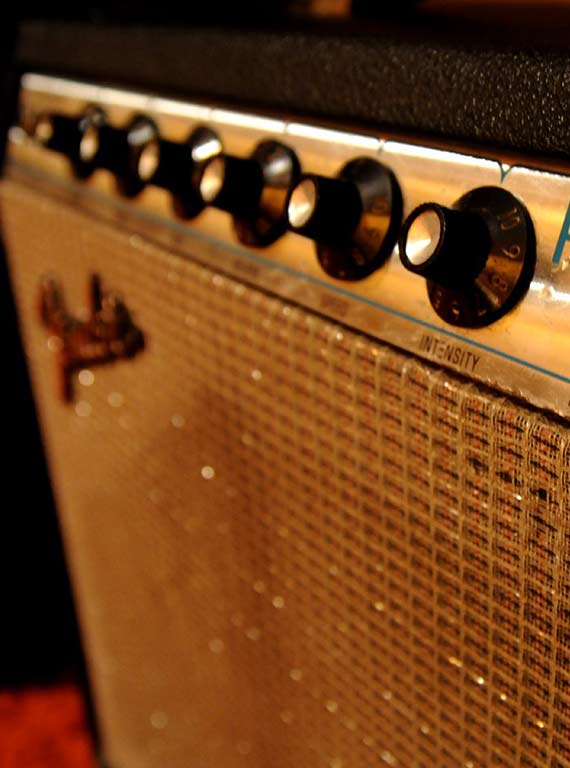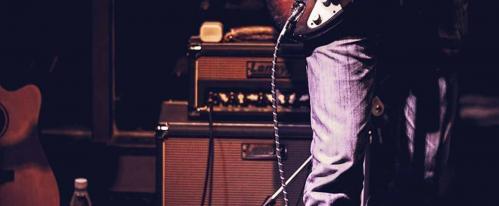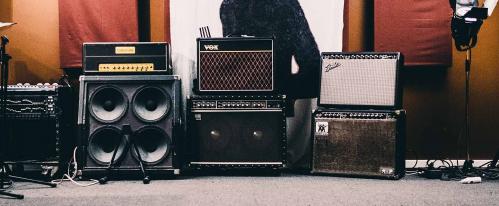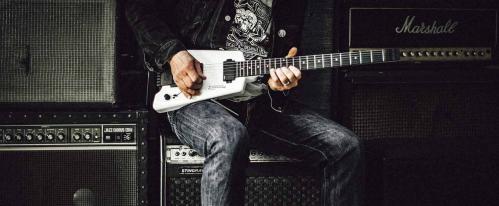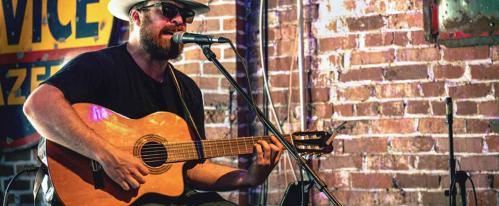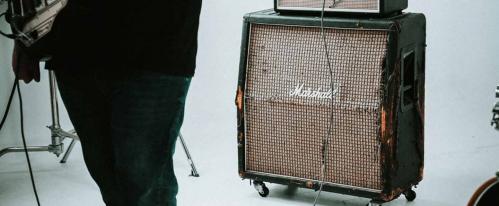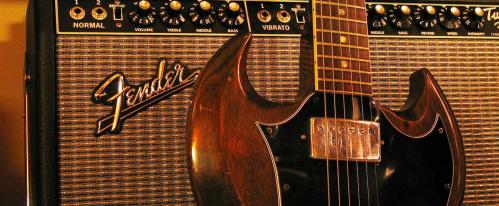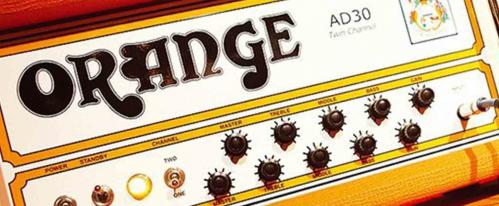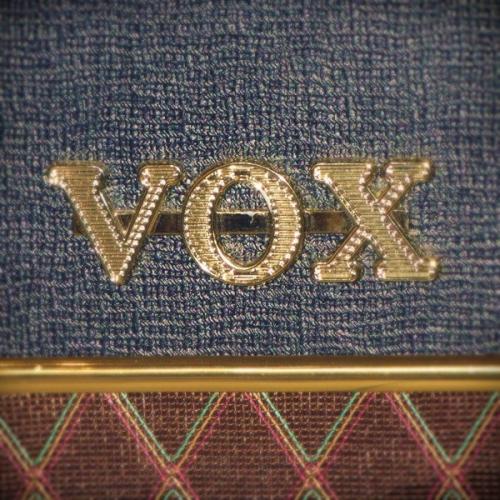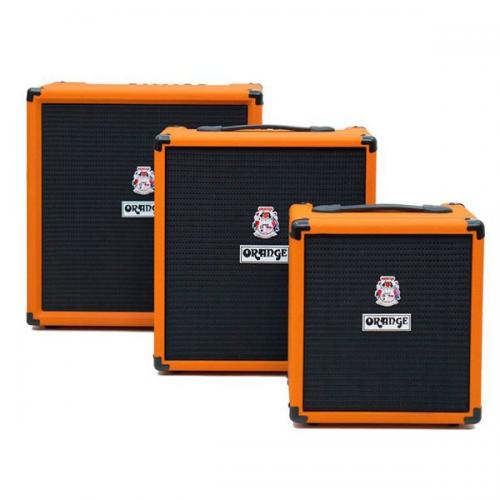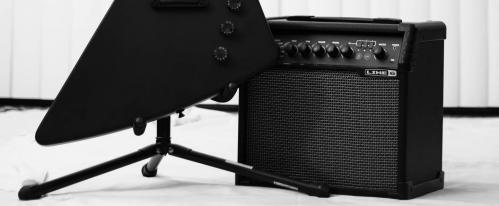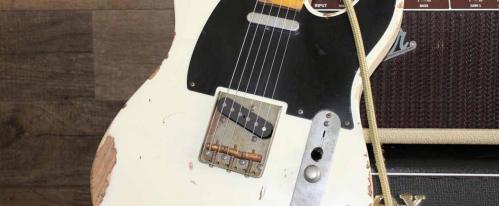Fender amps have been right there at the birth of Rock'n'Roll, and are just as popular today as they've been for the last 60 years. Here's our guide to help you choose the perfect Fender amp for guitar or bass.
The list of artists who've used a Fender guitar amp live or on record is enormous. It seems as if everyone has used them at some point, including Elvis, Chuck Berry, Buddy Holly, The Beatles, Rolling Stones, Oasis, The Strokes, Radiohead and White Stripes, to name but a few. Fender guitar amps have been a constant in rock music, featuring legendary clean tones, lush spring reverbs and, in the case of the newest solid-state models, some of the best modeling and built-in digital effects available today.
1) Fender Amps: A Very Rock'n'Roll History
The Fender musical revolution started before the birth of rock music, just after the end of WW2. Since his early teens Leo Fender had an interest in electronics, and when he grew up, Leo made a career for himself fixing and building PA systems for musicians, opening his own shop in California. Leo soon realised that amplifiers needed to be sturdy to withstand the life on the road, and decided to build his own, to care for the needs of travelling musicians such as his customers.
In 1946, Fender began manufacturing a series of now-legendary amps: the Deluxe, the Professional, the Dual Professional, and the Princeton. These were easily the most powerful amplifiers commercially produced back then. They all had the classic features we're familiar with now: heavy steel chassis, chromed control plates, and heavy pine cases covered with tweed fabric. These amps caught on straight away, and in 1948 Fender released the Champ, which became the most popular amplifier they built.
When the next generation of Rock'n'Rollers started to make some noise across the Atlantic, they also used Fender amps: British Invasion bands such as The Beatles, Rolling Stones, The Who, Yardbirds and others began to experiment with Fender amps: John Lennon was an early adopter, actually playing a tweed Fender Vibrolux when The Beatles were still starting, and after a well-documented interlude with AC30s, he and George Harrison used a Fender Twin Reverb in the final years, including at the Beatles famous rooftop concert:
One little detail not that well-known, is that the Beatles favourite amp was a Fender Bassman, as described on our Revolver Turns 50 blog post. Originally purchased by Paul McCartney, it was widely used on recordings by both John and George.
The list of illustrious British Fender users continues with Keith Richards (Dual Showman in the Sixties, Twin Amp now); Jimmy Page (Dual Showman in The Yardbirds), Pete Townshend (Bassman, Pro, Bandmaster and others); Marc Bolan (Dual Showman) and many others - so many, in fact, that it's almost pointless to try to create a comprehensive list of famous Fender amp users!
We'll just conclude this section by saying that, just like Fender amps have defined the rock'n'roll sounds of the Fifties and Sixties, they've carried on doing the same into the 21st Century: the Arctic Monkeys used a tiny, vintage Fender Champ to record most of the overdriven guitar sounds on their influential debut album; Jack White used a Fender Twin Reverb in the White Stripes, and The Strokes helped to popularize the modern Hot Rod Deville series, which is now a true staple in the setup of many indie bands.
With exciting new releases such as the new Bassbreaker series, it's fair to say Fender Amps will continue to define the sound of rock'n'roll for a long time to come. The Strokes used Hot Rod Fender Deville amps live which comes as an example that Fender Amps are an industry standard today.
2) The Main Difference Between Vintage Fender Amp models
If you A/B any choice of different new or vintage Fender amps, you'll probably notice tonal differences, but in many ways they are all pretty much similar: despite differences in valve configurations, speakers etc., they all have those superb clean tones that made Fender famous. The spring reverb and tremolo effect will also be pretty much the same on the amps that feature those effects - and they're the standard by which those effects are judged on other amps (and fx pedals.)
The most noticeable differences between those amps will be ones which are pretty much obvious when comparing any kind of valve amp, so they remain true with vintage Fender models, as expected: smaller, low-wattage amps will give you a great crunchy tone when they break-up, with the volume cranked up; louder amps will keep cleaner at louder volumes; and amps with bigger speakers will sound fuller than the ones which have smaller speakers.
3) Comparison Between the Most Popular Fender Vintage Amps
Vintage amps don't have "Master" only "Volume" controls. This means amps have different sweet spots, remaining clean at different volumes and breaking up earlier or later, so its with this in mind that we've separated them in three categories:
- Best for recording (lower wattage amps): Champ (for crunch when craked up); Princeton (for fuller cleans)
- Best for live (overdriven, crunchy tones, with earlier break-up): Deluxe, Vibrolux (cleaner than a Deluxe, dirtier than a Twin, perfect for blues - see Stevie Ray Vaughan!)
- Best for live (keeping clean at louder volumes): Twin, Showman, Bassman (also great for crunchier tones)
4) Fender Tweed, Blonde, Brownface, Blackface, Silverface... What's The Deal?
Those terms are just slang terms used to identify Fender amplifiers based on the color of the control panel or tolex/cloth covering of the cabinet (these terms are often misconstrued to refer to the color of the grille cloth). Each colour represents a particular Fender "era", when those different features first appeared.
Of course, there'll be purists who'll say one era sounds better than the other, but it all comes down to personal opinions. But knowing these definitions may help you to have a ballpark idea of when a vintage fender amp was made:
- Tweed: the most vintage, characteristic cloth covering of the early fender amps made in the 40's and 50's.
- Blonde: tolex colour of the amps amplifiers were produced between 1960 and 1964, including popular models such as Bandmaster, Bassman, Showman
- Brownface: colour of the control panel of amps, introduced in 1959 and discontinued in 1963. Some models have blonde tolex, others had brown tolex.
- Blackface: the most legendary type of Fender amp, after the tweed models. Originally produced between 1963 and 1967 (some units continued to be made into early 1968) production included classic models such as the Twin Reverb. This is the first time Fender amps featured the distinctive silver grille.
- Silverface: colour of the control panel of the amps built between 1967 and 1981.
5) Are Fender Vintage Amps Worth The Investment?
Yes and no. Sure, vintage Fender amps are part of rock'n'roll history, and for mojo and history alone, they'd be worth investing - if you have the money to spare. But for the serious, working musician who plays regular gigs or records often, it wouldn't be such a great idea. Firstly, even though there's no doubt that Fender amps were (as indeed still are) extremely well-made, older amps are bound to cause more problems than new ones - and without being covered by warranty!
You'll see some big names such as Keith Richards, Joe Bonamassa or The Edge using vintage Fender amps onstage - but they can afford to, and it's no big deal to them. However, the vast majority or gigging artists, from mid-level indie bands to famous artists such as Noel Gallagher or Coldplay, prefer new amps.
But secondly, and most importantly, is the simple fact that Fender still make great amps, including reissues of some of their most classic, vintage models. They're the best way to get that classic Fender look and tone, without needing to travel back in time. Actually, having a new reissue amp is a bit like travelling in time... after all, all those artists in the Fifties and Sixties were playing brand new Fender amps!
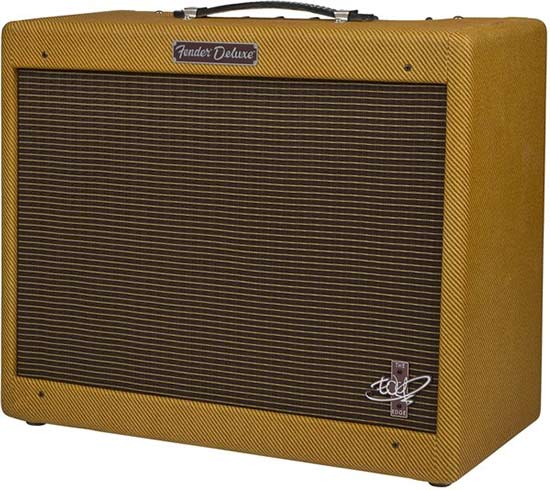
6) The Best Vintage-Style Fender Reissue Amps Available Today:
You don't need to buy an actual vintage amp to get a taste of some classic vintage Fender amps. There are some truly great reissues:
- Fender The Edge Deluxe: whether you're a big U2 fan or not, this is one of the best vintage-style Fender amps today.
- Fender Twin Reverb: heavy and very loud, still remains one of the best gigging amps, ever!
- Fender Princeton: superb recording amps! At a loud 15 watts, they can be used for gigs, but it's in the studio where they shine.
- Fender Bassman: Fender's best loved bass amp is still one of the best amps for electric guitars!
- Fender Vibrolux: great alternative to a Twin Reverb, slightly cheaper, too!
- Fender Deluxe Reverb: one 12" speaker, and fantastic Fender tone. A Mid-60's classic, now available in a few different versions.
Watch this demo of the Fender The Edge Deluxe:
7) Fender Solid State Amps: Are they any good?
One day, they were considered the future. Today, many pros would consider solid-state amps as poor relations to valve amps. The truth, as usual, lies somewhere in-between - and Fender makes some of the best solid state amps available today. In fact, Fender has a - excuse the pun - solid tradition in making great solid-state amps! Their Eighties and Nineties solid-state models have great cleans, and even pros such as Radiohead's Jonny Greenwood can be partial to them.
Even though many earlier Fender solid-state amps featured an "overdrive" channel, most guitarists didn't like to use it - often described as "fizzy". But that's ok, because the main reason you'll choose a solid-state Fender is for the beautiful, lush cleans. The right way to look at those amps is not as "lesser" amps than Tube models, only as a different kind of amps.
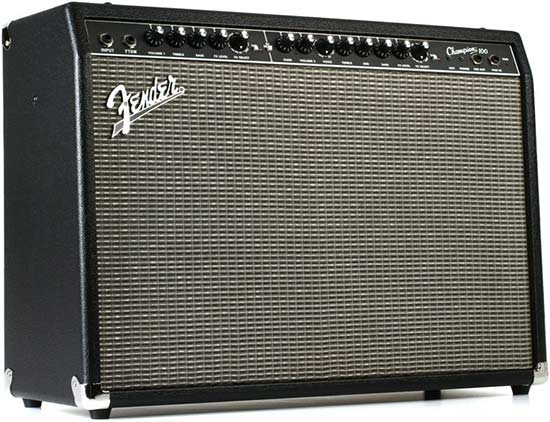
But Fender amps have evolved and today their solid-states sound even better: Improvements such as digital modeling mean that Fender solid-state amps now have a much more satisfying overdrive/distortion sound if you want to use this effect.
The Champion-series models are ideal for beginners, cheap but delivering some great tones! The Champion 20 is a perfect first amp for anyone who's just starting, while the Champion 100 is a great alternative for gigging on a budget: very loud, and looks just like a Twin Reverb from a distance.
Even better, is the Fender Mustang series. Those amps can model classic, vintage Fender amp tones, and many players who've used one will tell you they're as good - or better - than valve amps such as the popular Blues Junior! Whether you agree or not, one thing is clear - they are really good! Watch this Fender Mustang III demo:
8) The Best Modern Fender Amps Available Today
Besides all the classic models still in production, Fender has a quite impressive range of modern amps - some of which have already reached a "classic" status, too! Here's our pick of the best modern Fender guitar amps, available today:
- Hot Rod Series: since The Strokes, at least, these have become the standard for indie-rock bands.
- Blues Junior and Pro Junior: modern classics. Both are a loud 15 watts and superb for recording but also used live. Famous users include Noel Gallagher (Blues Jr.) and Jeff Beck (Pro Jr.)
- Super-Sonic: modern series with a classic, vintage look but modern features including more gain than vintage models. Hidden gems!
- Bassbreaker: the newest models. These amps look modern but are basically a re-creation of the legendary Bassman circuit from the 50's, with extra improvements and features.
Watch this demo of the new Bassbreaker:
9) Fender Bass Amps
Fender has famously made one of the best bass amps ever. Unfortunately (for bassists...) it turned out to actually be one of the best GUITAR amps ever - we're talking about the Bassman, of course! Since this slightly massive change of course, Fender never again gained a reputation as manufacturer of great bass amps - even though they kept coming: another fantastic vintage model, which is much sought-after today, is the Fender Musicmaster bass amp (though, once again, it's better known because it turned out to work great with guitars - it's one of Dan Auerbach's favourite amps, used on many Black Keys recordings!)
For this reason, sadly (but perhaps wisely...) Fender has chosen not to invest too much on making different new bass amp models. The good news, though, is that the ones they DO make are very good indeed! We're talking about the Fender Rumble series. These amps are very well-priced, powerful and unbelievably light for their sizes - a triumph of design. It seems that, after many decades, Fender finally designed a series of bass amps that bassists can call their own!
10) Fender Amps Serial Numbers: How To Date Your Amp
It can be quite hard to accurately date vintage and older Fender amps pre-1994 by serial numbers, because records for those were not kept. However, there are a few ways you can get a approximate date.
METHOD 1: DATING 1951-69 FENDER AMPS USING THE TUBE STICKER
On the inside of the cabinets of *most* Fender amps made after 1950 and before 1970, there might be a “tube location” sticker. This sticker is a chart that shows the types of tube types used and the order of their physical location in the amplifier, and *may* be rubber-stamped with two-letter date codes that denote the year (first letter) and month (second letter) of production. These stamped letters may appear in various positions on the chart.
| YEAR | MONTH |
| 1951: A 1952: B 1953: C 1954: D 1955: E 1956: F 1957: G 1958: H 1959: I 1960: J 1961: K 1962: L 1963: M 1964: N 1965: O 1966: P 1967: Q 1968: R 1969: S |
January: A February: B March: C April: D May: E June: F July: G August: H September: I October: J November: K December: L |
View these two examples. Can you tell the date the amps were made? First sticker says "PB", second one says "OG"
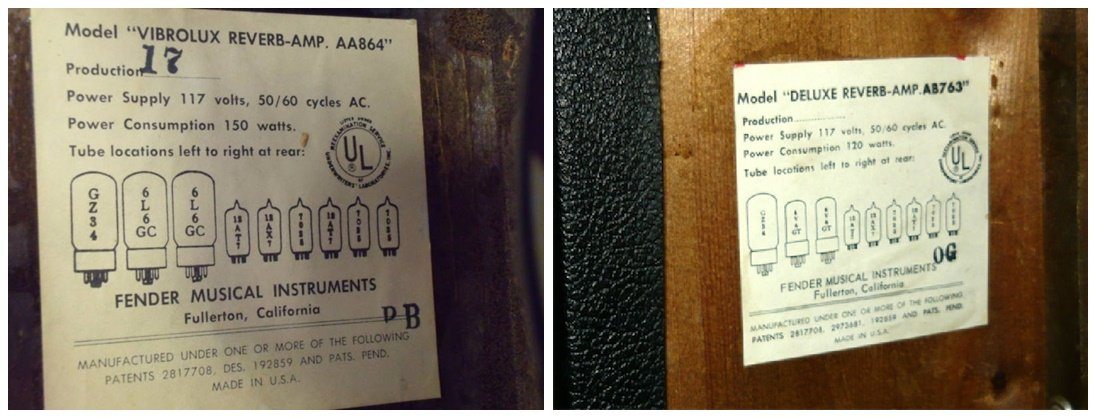
METHOD 2: DATING FENDER AMPS USING TRANSFORMER CODES:
Fender amps that don’t have rubber-stamped tube sticker date codes have EIA numbers on their transformers that might enable determination of the production date. These numbers always begin with “EIA 606,” and are followed by three or four digits in various combinations.
If three digits are present, the first digit refers to the year (i.e., a “7” would mean 1967). If four digits are present, the first two digits refer to the year (i.e., a “66” would mean 1966). The last two digits refer to the week of the year (i.e., a “26” would mean the 26th week or, roughly, June). For example, EIA 606-4-21 would denote the 21st week of 1964. It is also advisable to add about 6 months to the date to allow for time these parts may have spent in inventory storage.
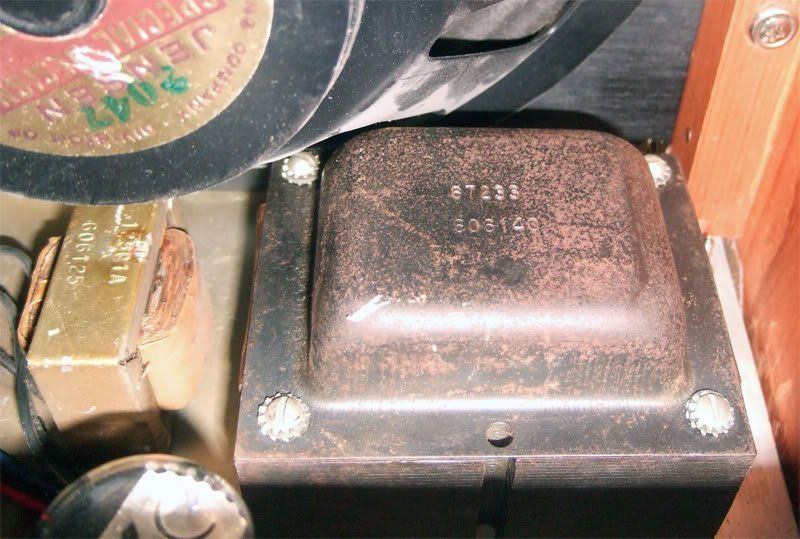
METHOD 3: DATING CONTEMPORARY FENDER AMPS
It's much easier to date modern Fender amps - all you need to do is look at the Fender Quality Assurance sticker. All Fender amplifiers manufactured from 1990 to the present include a date code, printed on the quality assurance sticker on the back of the amp chassis. This black-and-silver sticker contains several lines for “sign-offs” on completion of sound and electrical testing. The final line contains a date code of two printed or handwritten letters denoting the amplifier’s production date by year (the first letter) and month (the second letter), just like the codes used on method #1.
| YEAR | MONTH |
| 1990: A 1991: B 1992: C 1993: D 1994: E 1995: F 1996: G 1997: H 1998: I 1999: J 2000: K |
January: A February: B March: C April: D May: E June: F July: G August: H September: I October: J November: K December: L |
View the next example and see if you can date amp correctly. Sticker says "GH":
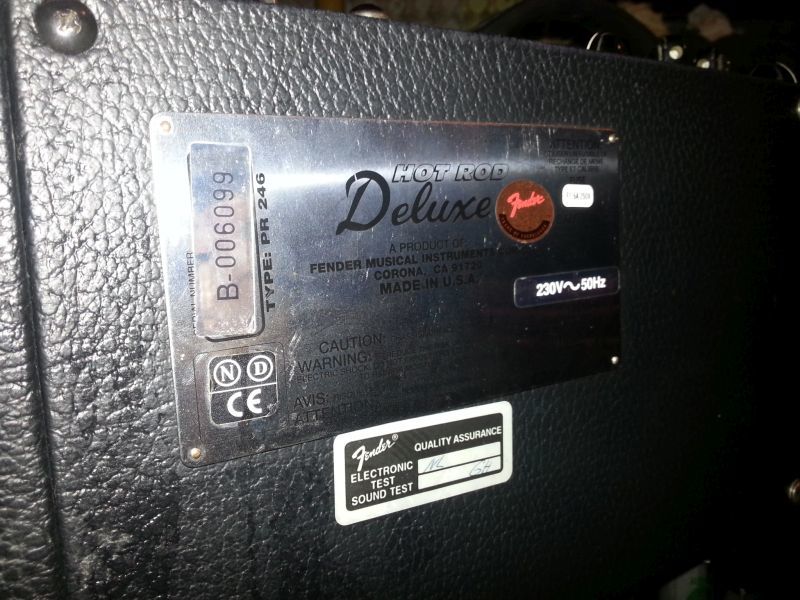
If you read this blog thus far, congratulations... you're now an expert on dating Fender Amps! Now, why don't you visit your local PMT Store to try out a few different Fender amps? Visit us to check our massive selection of Fender gear.

